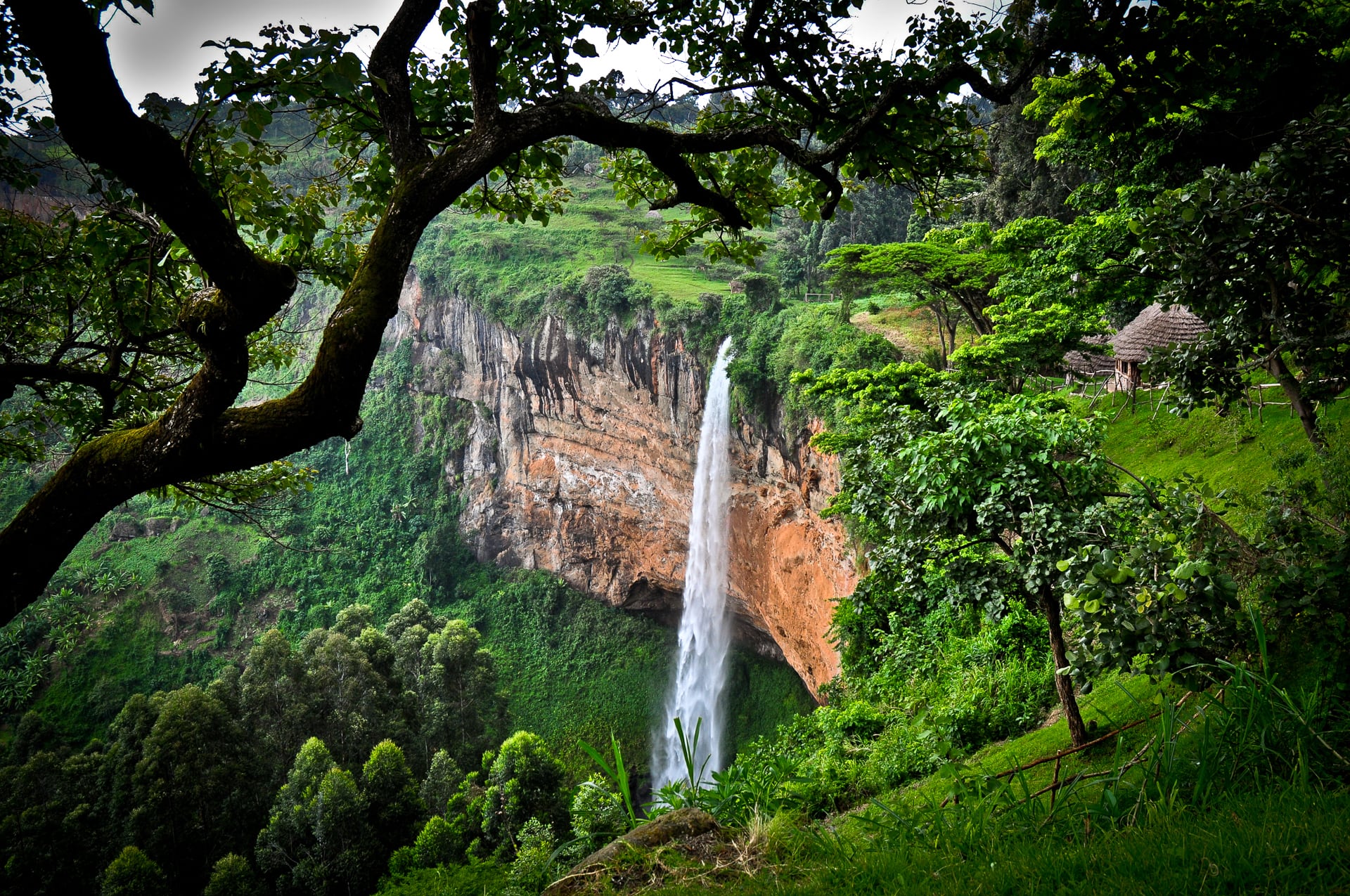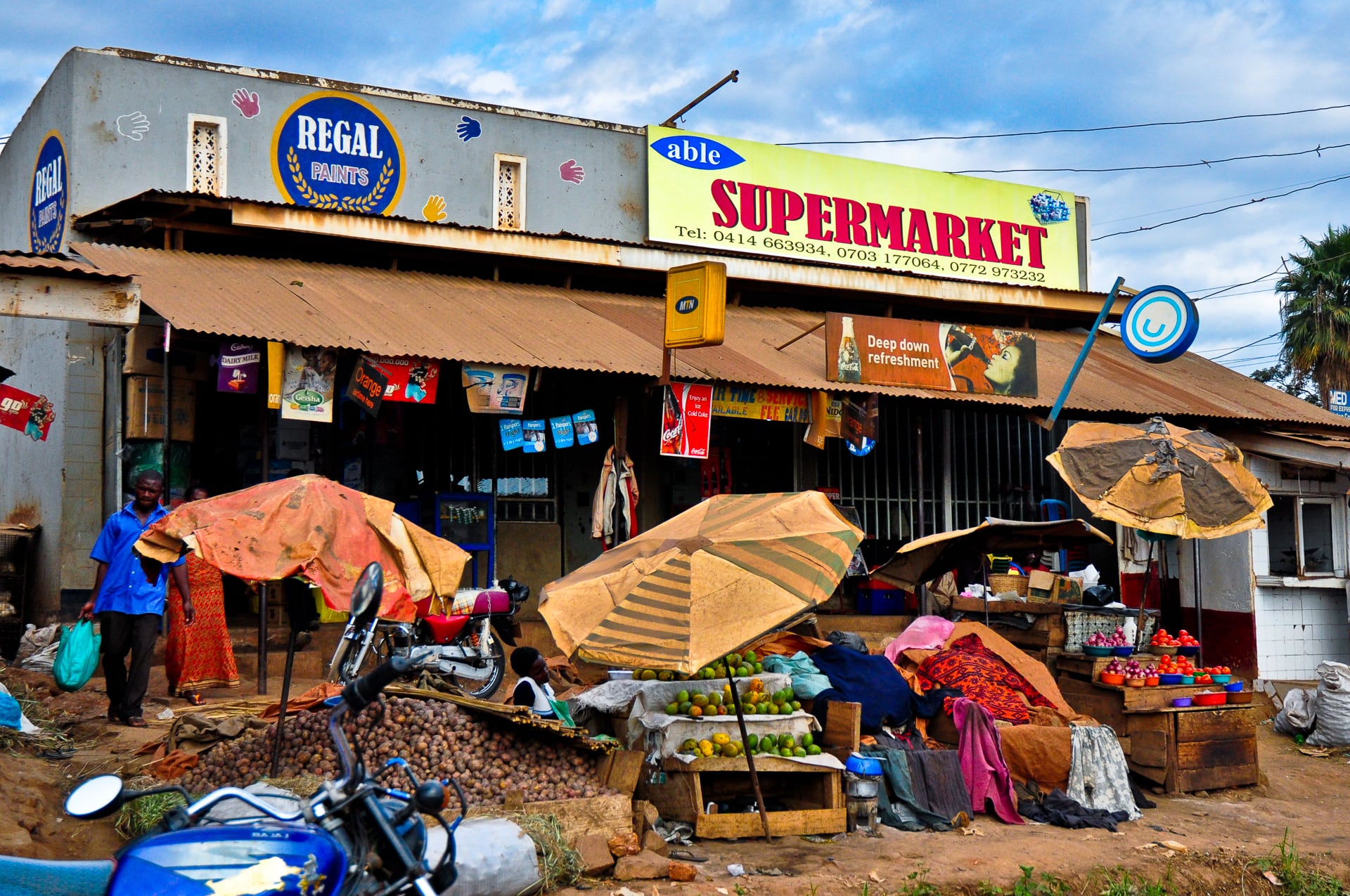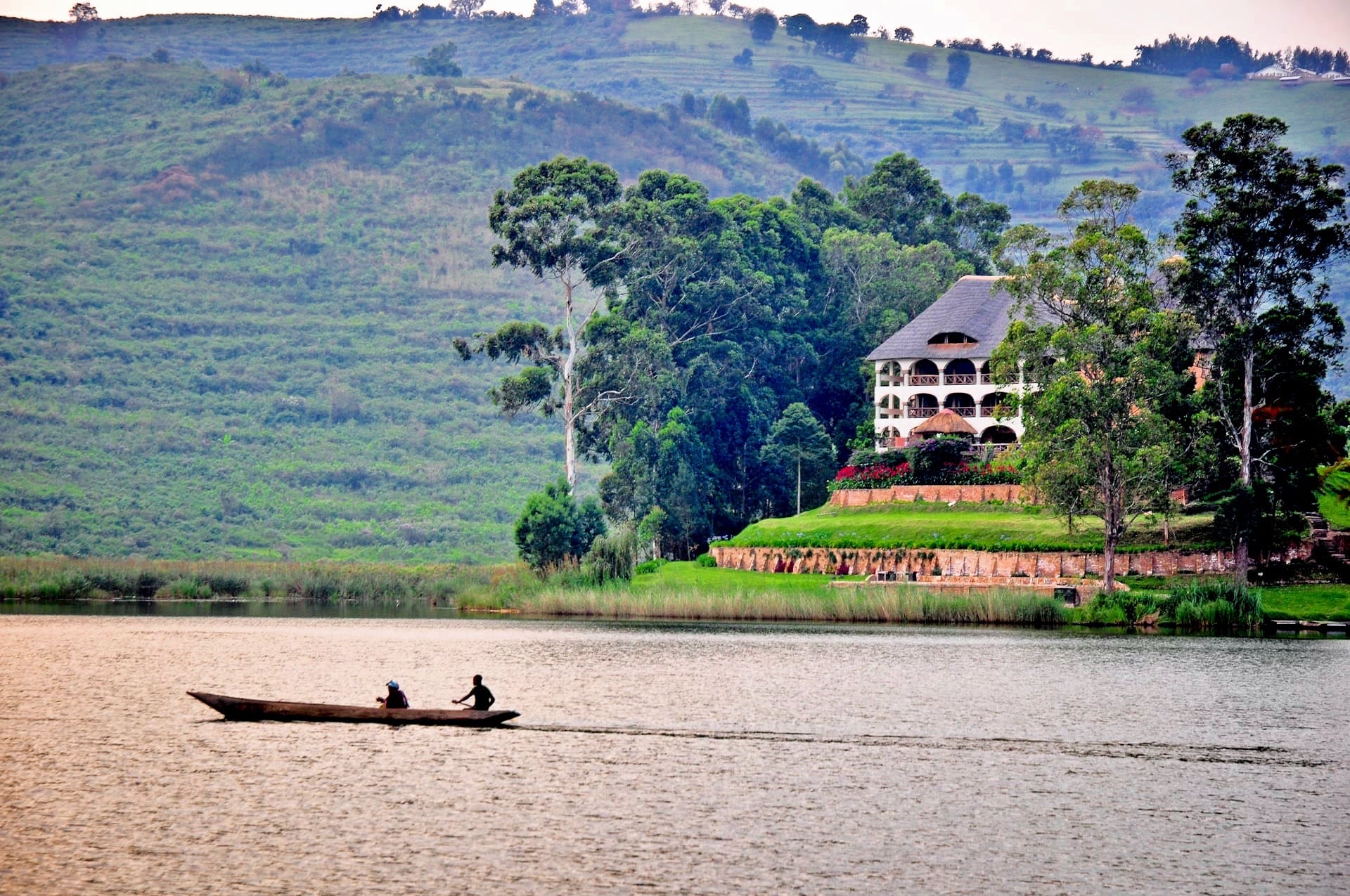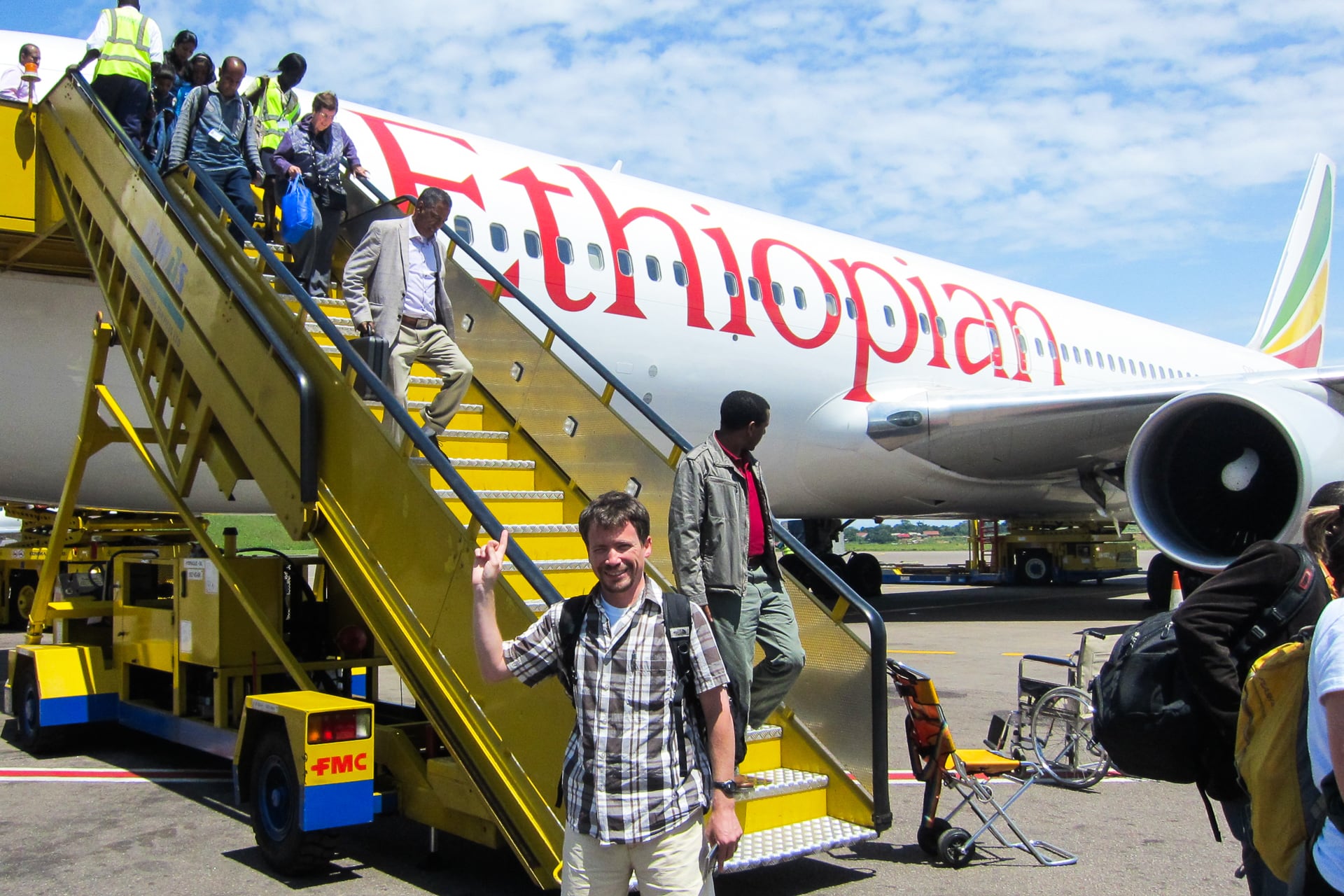My research partner, Alexandra, and I took a weekend break from report writing in Mbale to head to nearby Sipi Falls. It took one hour on a matatu (shared bush taxi) and cost about $2.80 USD each way (in 2011).
Sipi Falls is a pretty phenomenal place — not because it’s the highest falls or the widest falls or because it’s the Nile or any other superlative either. Sipi falls is just simply a fantastically majestic natural wonder, surrounded by some of the most stunning scenery anywhere.
For background on what took me to Uganda in 2011, read “The Uganda Assignment.”
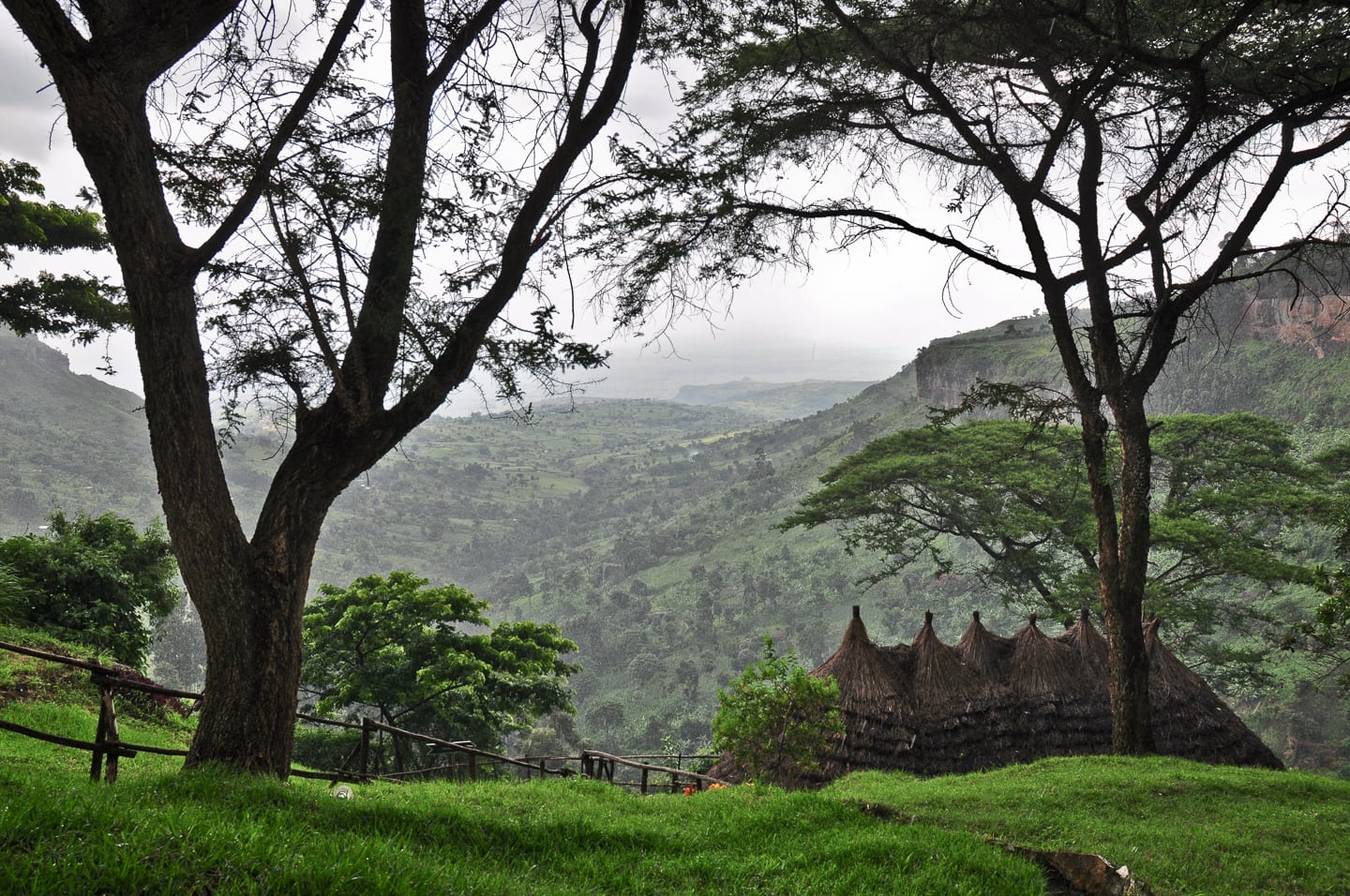
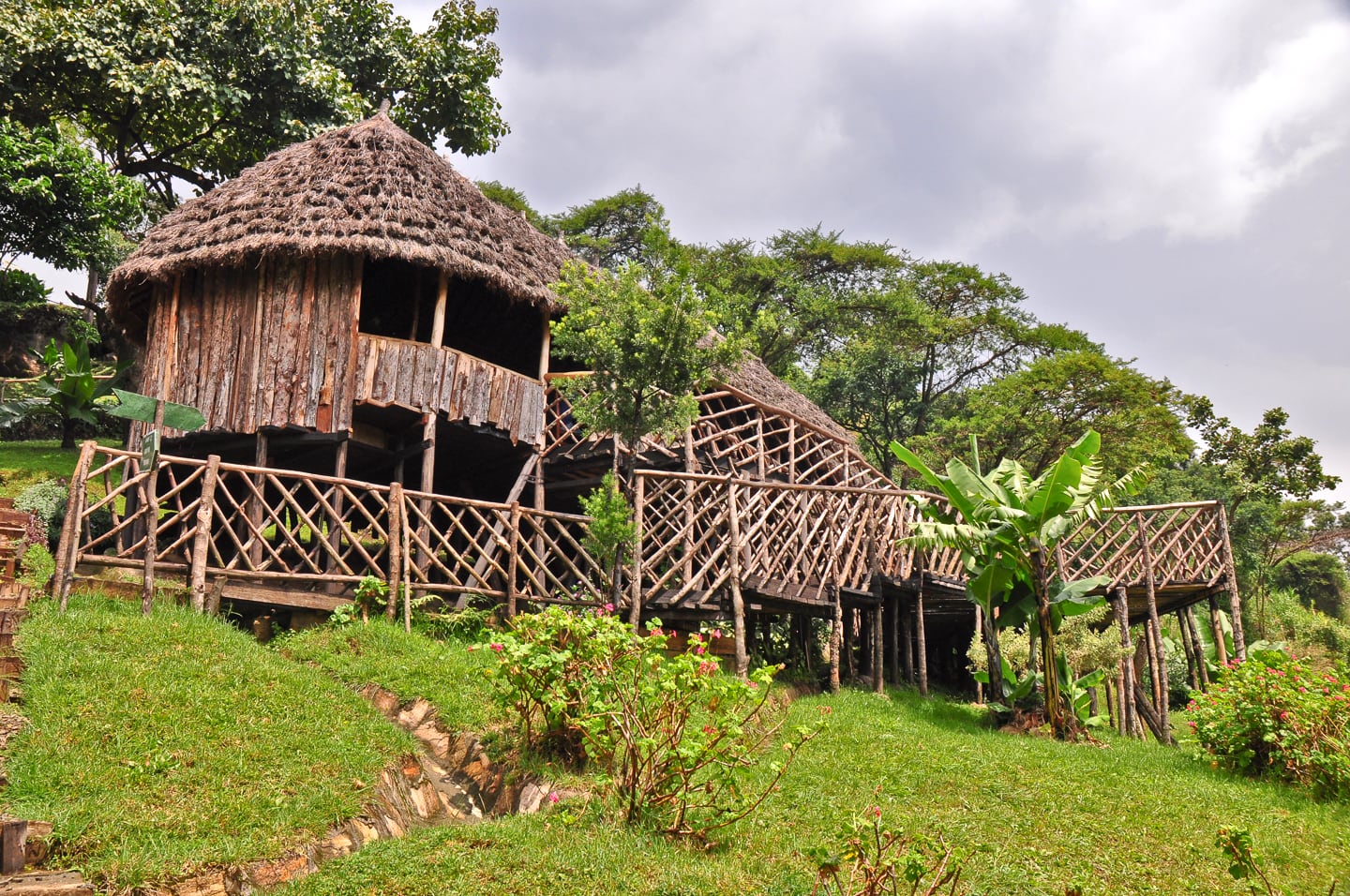
Lacam Lodge at Sipi Falls
We stayed at the rustic, yet eco and tasteful Lacam Lodge. As of 2011, it’s the closest lodging option to the scenic lower falls (and in fact, the lodge is perched OVER the main falls!) Self-contained bandas(cabanas/huts) run about $40/person including full board! Lacam utilizes compost toilets, which are an experience in and of themselves — though the novelty wheres off fast when you’ve got dysentery…(more on that in a moment…)



The Sipi Falls Hike
The lower falls are cool and all, but most folks come to Sipi for the whole enchilada — viewing the lower falls and hiking to the middle and upper falls.
The hike takes you through family farms and lush, green jungly landscape, punctuated by bright red clay. The route to the waterfalls starts in Budadiri, winding along the Sasa Trail. I’m not sure whether a guide is required on this route, but we found ours extremely helpful. Unfortunately, he was wrong about the weather…
As we saw the dark clouds approaching, we asked if we should bring rain gear. Our guide said with a chuckle, “you may, but I don’t think you’ll need them. It hasn’t rained in the afternoon here in over three years.”
Famous. Last. Words.

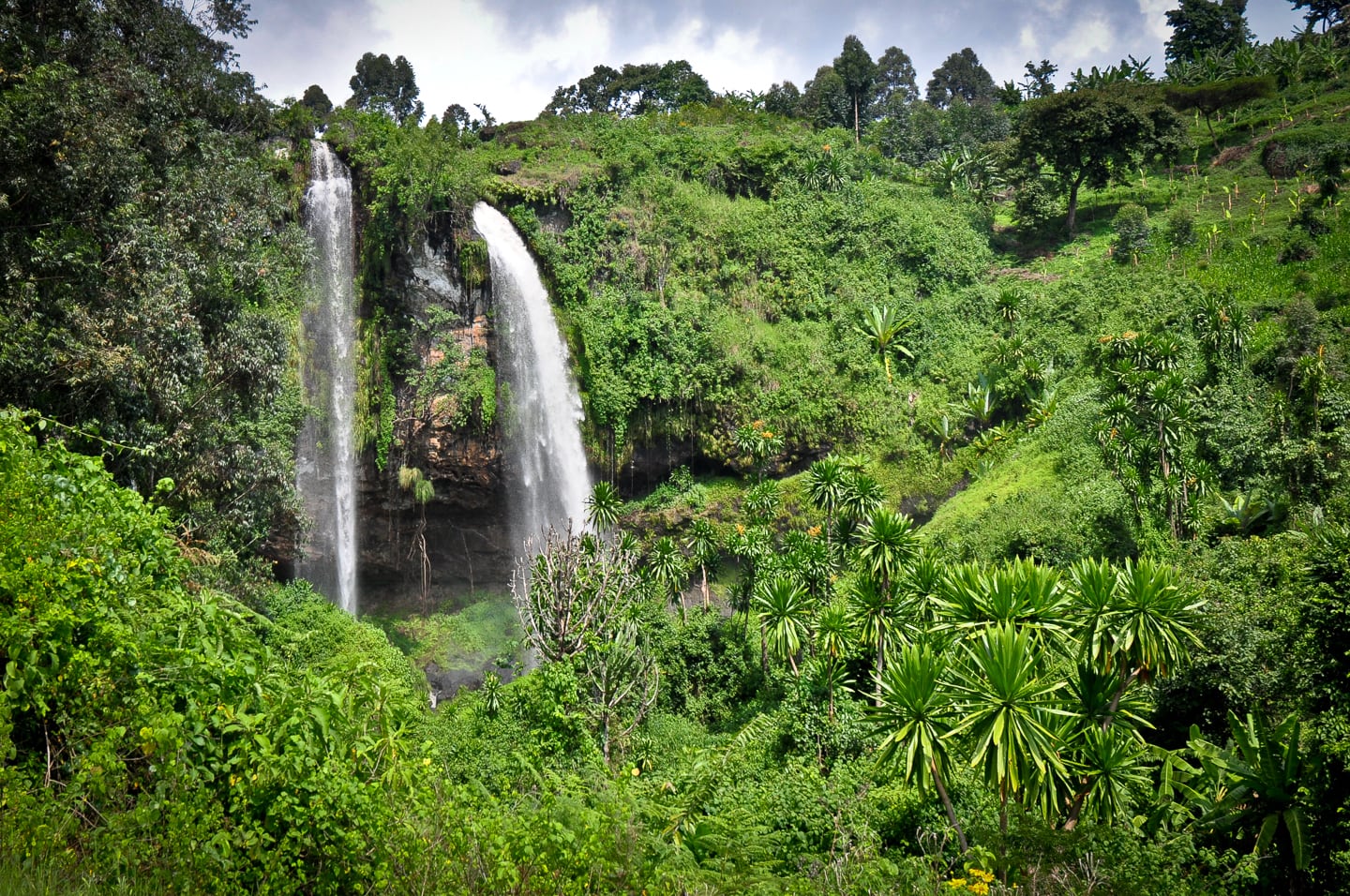
We arrived at the middle set of falls fairly quickly. These ones were especially cool because the trail led behind them.
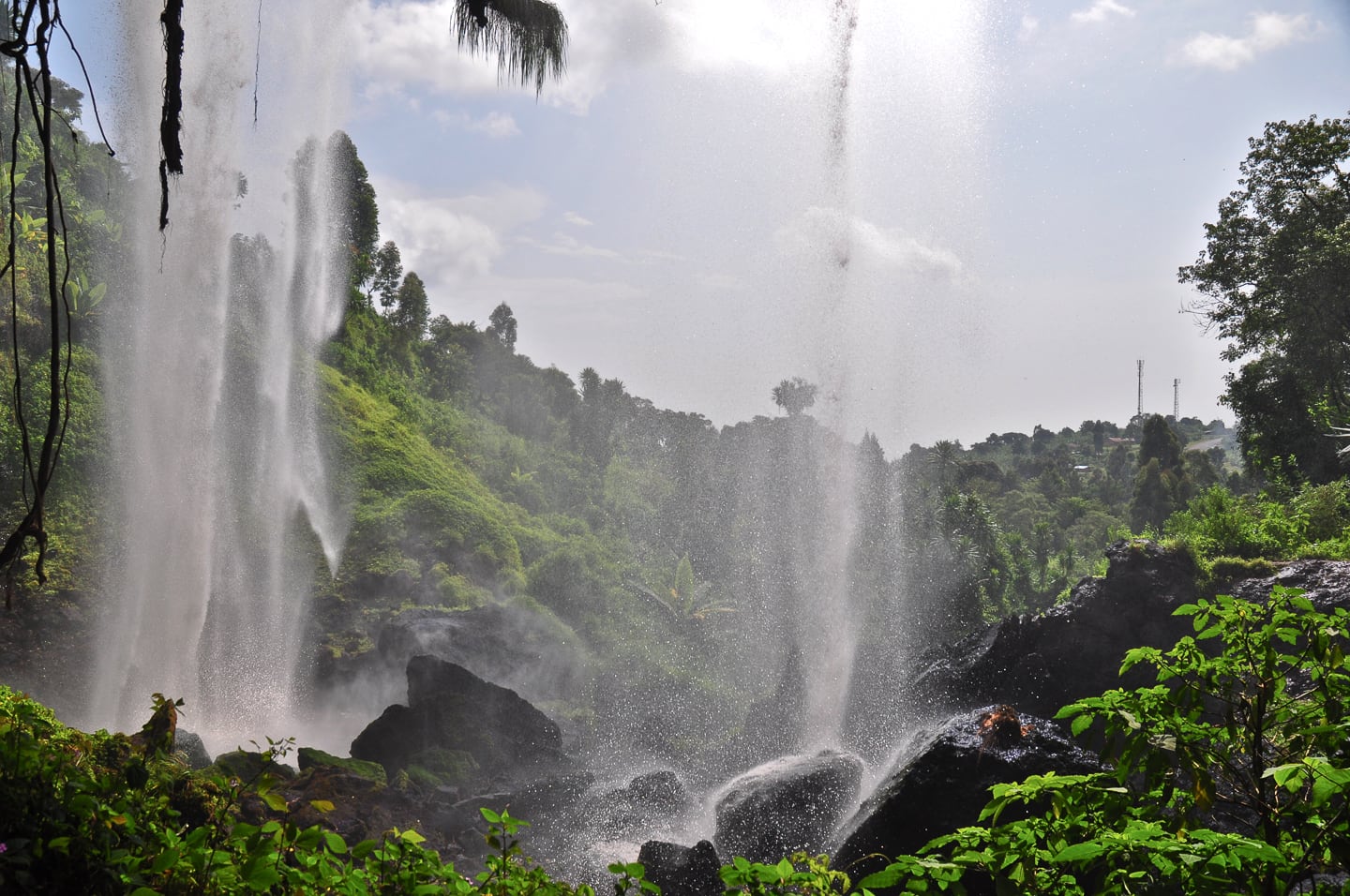


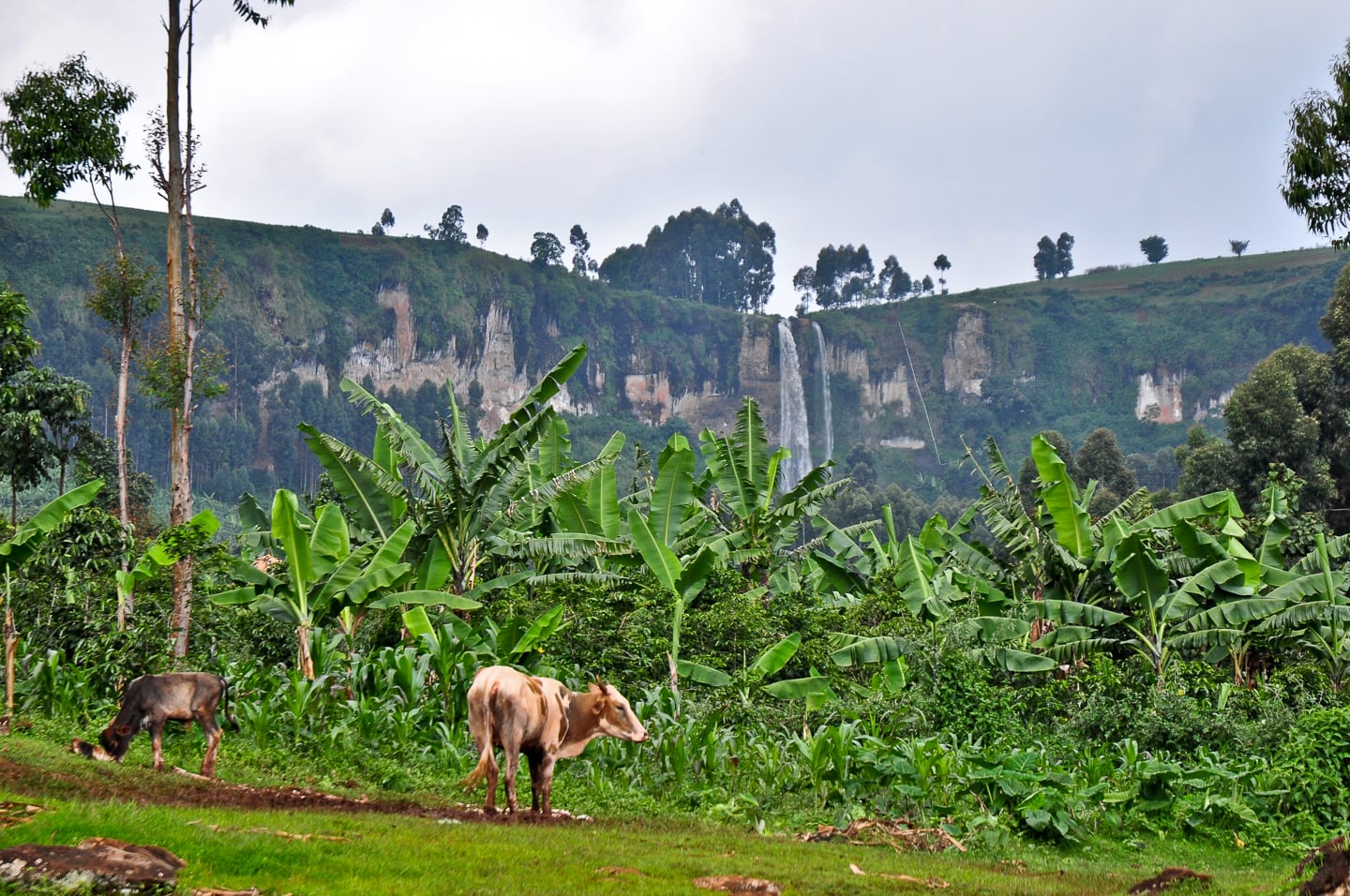

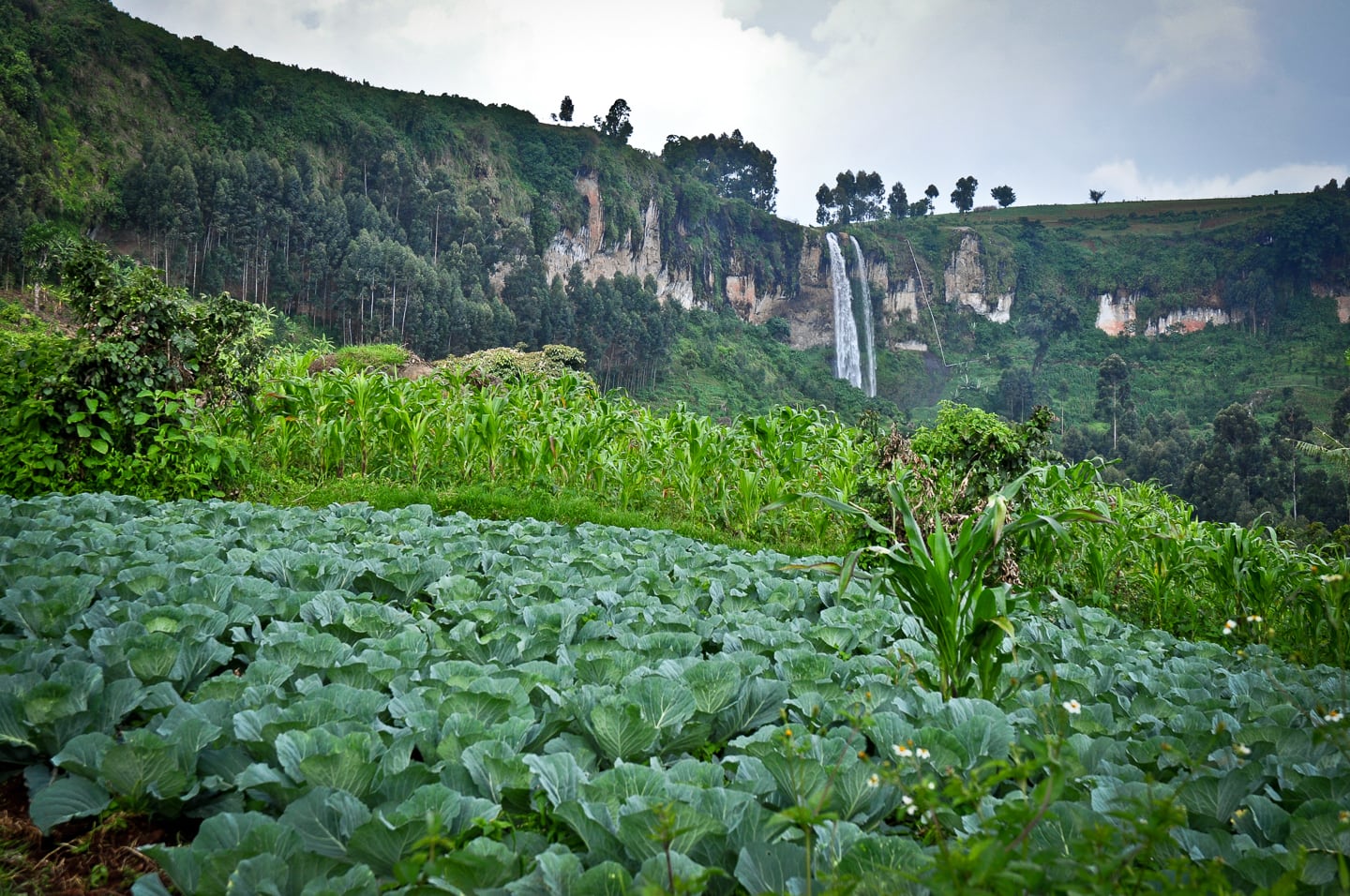
One thing I never got tired of in this part of Uganda was simply how lush and green everything is. When non-Africans think of Africa, undoubtedly, many images come to mind — savannah, desert, Baobob trees, maybe even jungle — but probably not these images here.

A real-life picture postcard of Eden.
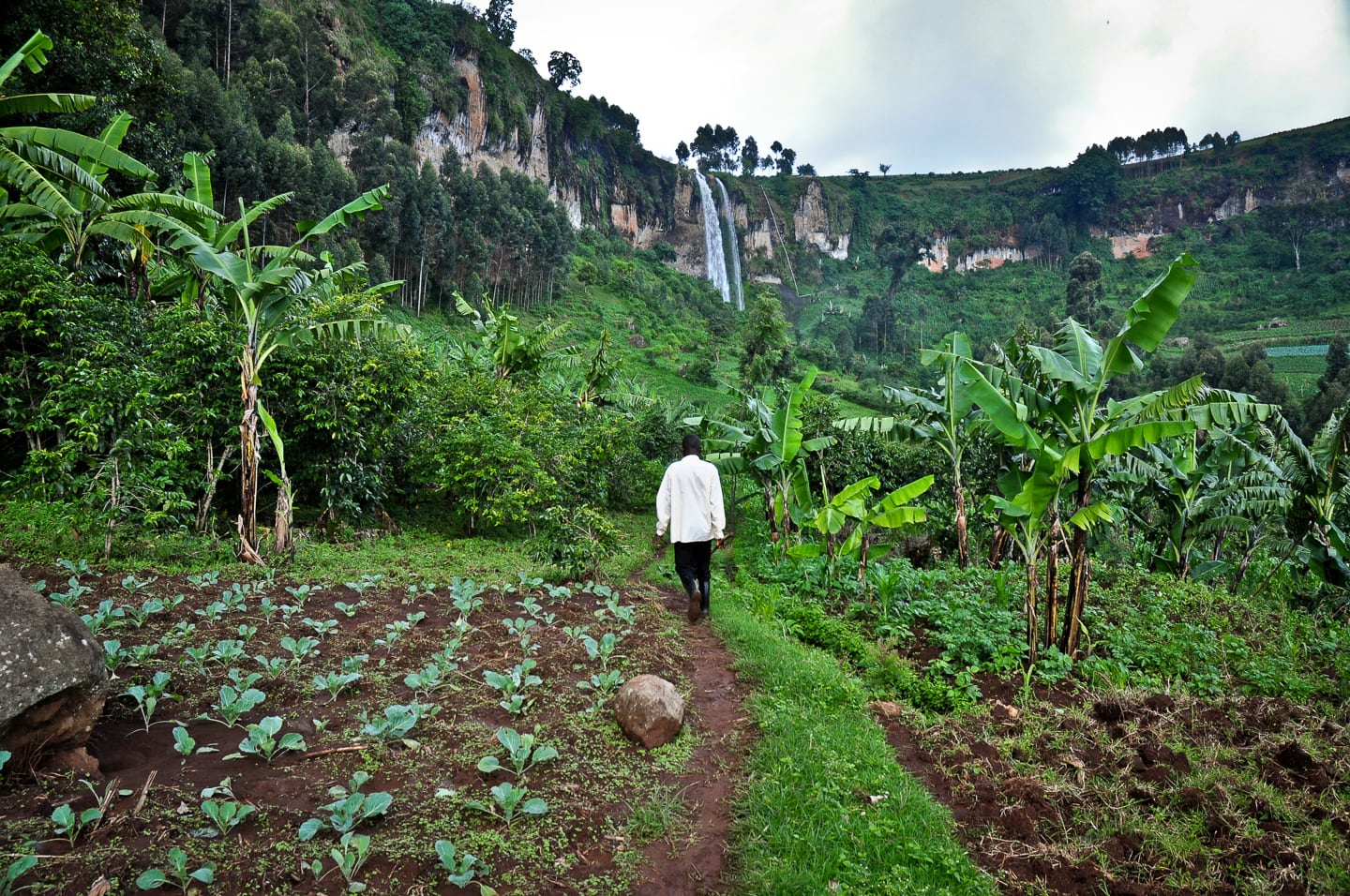

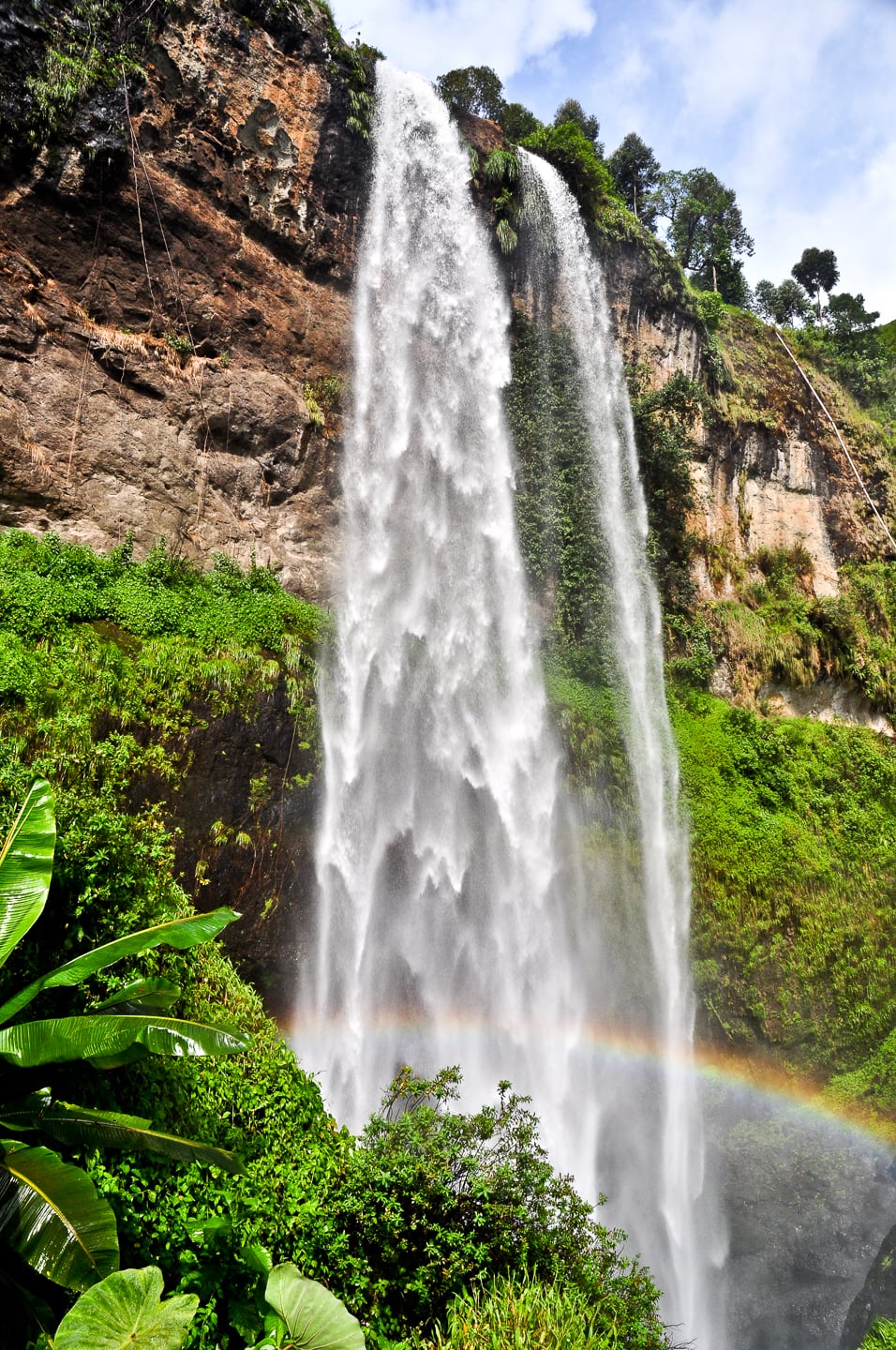
Finally, we arrive at the third and final set of falls.


But the adventure doesn’t end there. We’re only about half-way through the hike! We follow our guide higher and higher until we reach the top of the falls.


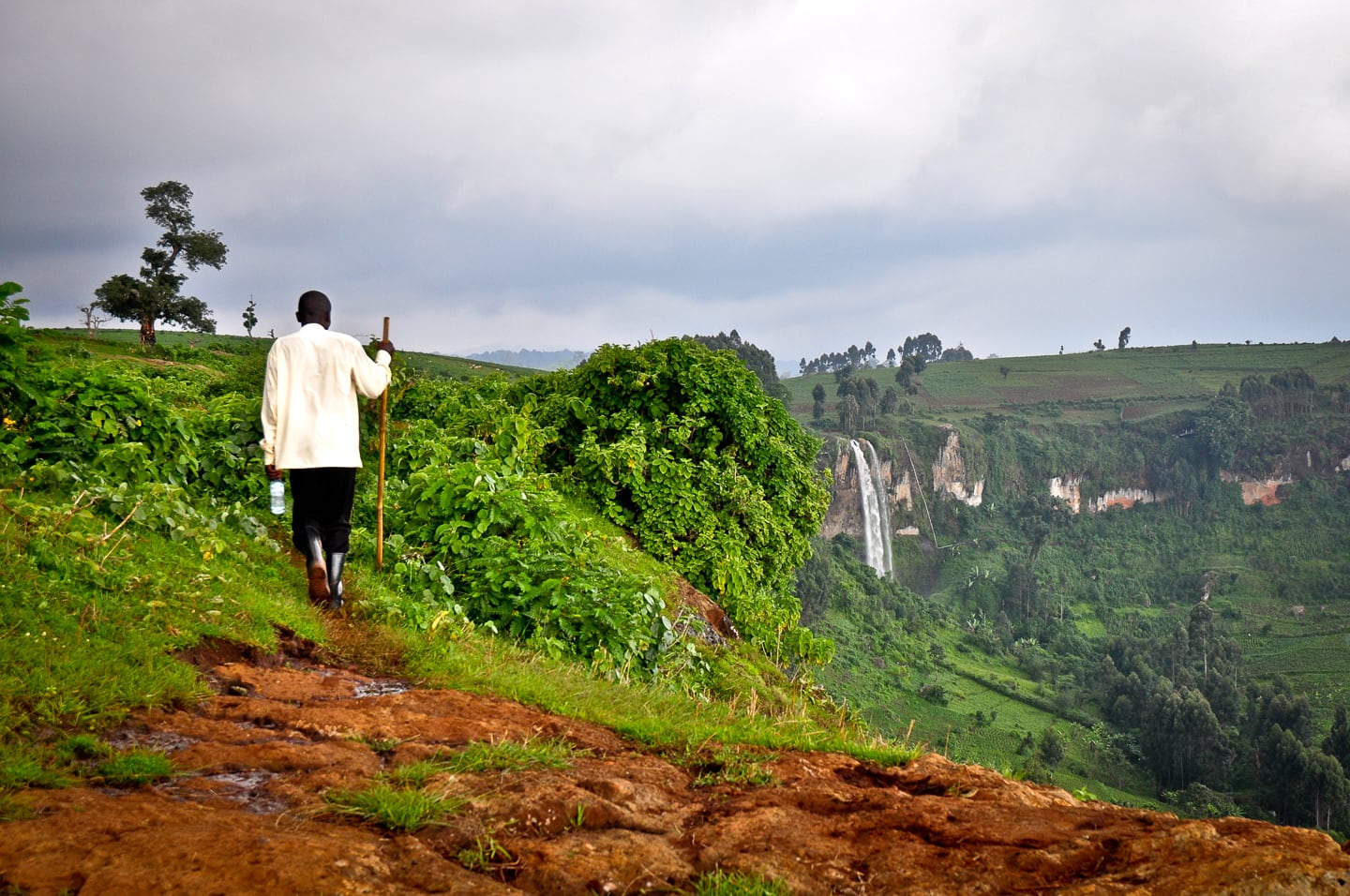
This photograph (above) is the last I have of our hike. Seconds later all hell breaks loose as the skies open up, lightning crashes down and I’m frantically packing my camera and fishing out my rain jacket. Yep…I ended up taking the rain jacket against the suggestion of our guide. It’s not that I didn’t trust him or believe that it hadn’t rained in the afternoon in three years (though that did seem a bit far fetched in a place so lush) — I didn’t trust the ominous clouds, and rightly so.
Five minutes later, we found ourselves huddled in a tiny reed hut in the middle of a wide open space atop a ridge. The hut was the only shelter around and lightning was striking all around us, some in very close proximity to our little hut…not the most ideal location you want to be in in this type of situation, but the only option we had.
In Uganda, you take electrical storms seriously. During our two months in-country, the news reported a number of lightning related-deaths on a regular basis. One such incident that left a particularly indelible impression on me involved a school room full of children. Lightning struck the metal roofing of the typical concrete classroom, killing 50 students. 50 students! Turns out that the school had had a lightning rod installed on the roof for many years, but had been removed recently due to lack of strikes in the area in the past few years and budget issues. School officials thought the change in weather would be permanent, but it turned out to be cyclical.

After a while under the hut, we realized the storm wasn’t letting up and decided to try and make it down in the rain. Needless to say, by the time we made it back to town we were soaked and covered in red clay mud, horrid stuff to try to clean off if you’ve ever had to deal with it. My shoes were the worst. I must’ve added about ten pounds to each shoe in caked on mud. Luckily, the fine people at Mt. Elgon Hotel back in Mbale were nice enough to take care of my shoes for me. When I got them back, they were about as good as new and didn’t cost me a penny (though I tipped the friendly groundskeeper who made it his mission to purge my footwear of the Sipi).
When we made it back to Budadiri that afternoon, we stopped in at a small ma and pa chapati and chai joint (no, this ain’t India, but apparently the Indians have made quite an impact on Uganda cuisine, as chapati and chai are about as ubiquitous in Uganda as they are in India…perhaps even more so!).

The Gift
During our time at Sipi Falls, I yearned to bring a souvenir back with me to Mbale. I thought I had failed miserably in this endeavor until the very next day when Alexandra, my research partner, and I realized something ain’t quite right in the world. Tip to all you eco-travelers out there: Compost toilets may be awesome for the environment, but not so awesome when you’ve got major gastrointestinal challenges…
So, I soldiered through it for the next few days, until things took a turn for the really ugly and both Alexandra and I found ourselves on the back of a motorcycle in pretty rough shape headed to the Mt. Elgon Hospital in Mbale. Now, let me just say that my brief stay at Mt. Elgon was awesome, well, under the circumstances. It was just after sunset in the evening, and we walked right in and were admitted right away. They did some lab tests, took my vitals, and did a consult. Less than an hour (and $6.67 USD) later, I was discharged and on my way back to the hotel (along with Alexandra, of course). The diagnosis was bacillary dysentery caused by a severe Shigella infection. Luckily for Alexandra, she never got beyond the Shigella stage. I won’t go into details, but bacillary dysentery is not pretty, and I was thrilled to be on the road to health within hours of beginning my regimen of pills.
We never quite figured out how we got Shigella, though we know it is spread through poor hygiene in food preparation. The chapati is an easy target, but symptoms came on too fast. The only thing that we could trace it back to was a spaghetti lunch that we split family style.
Never in my wildest dreams would I have guessed I’d get dysentery from eating spaghetti in Africa. Sometimes travel souvenirs choose you, I guess.

